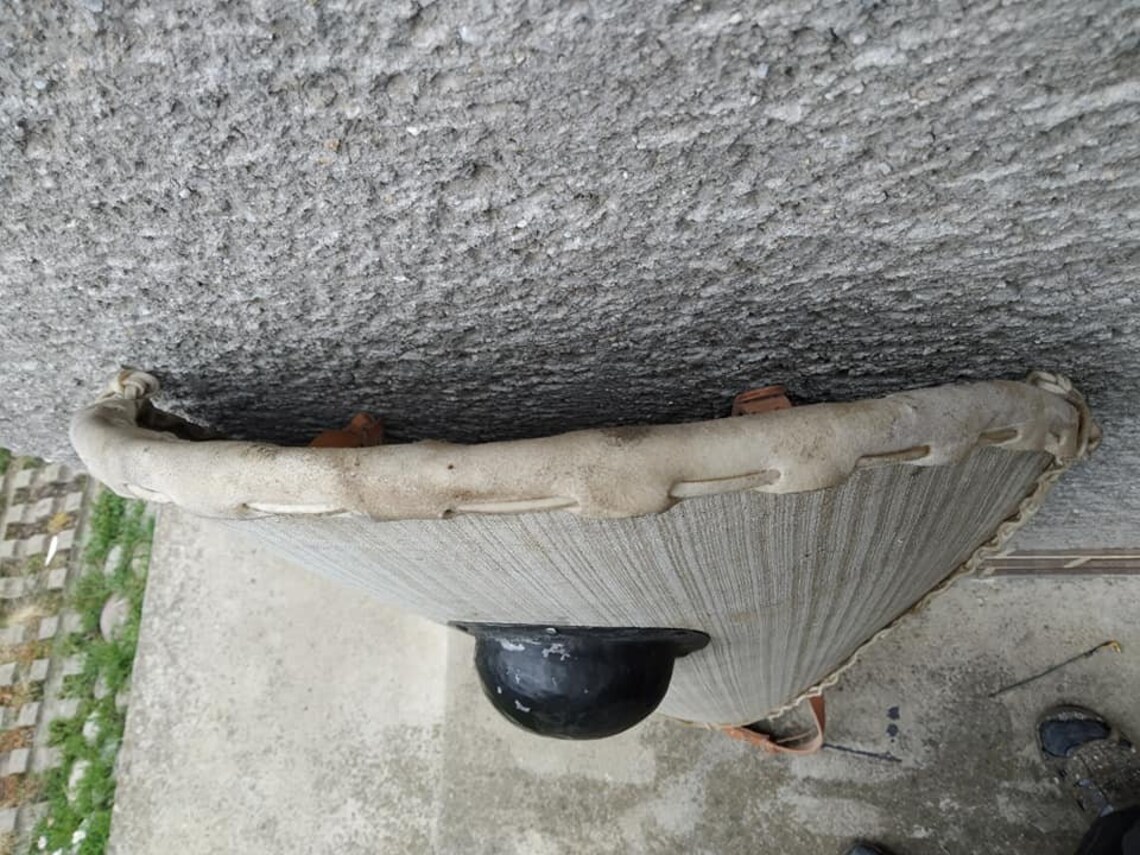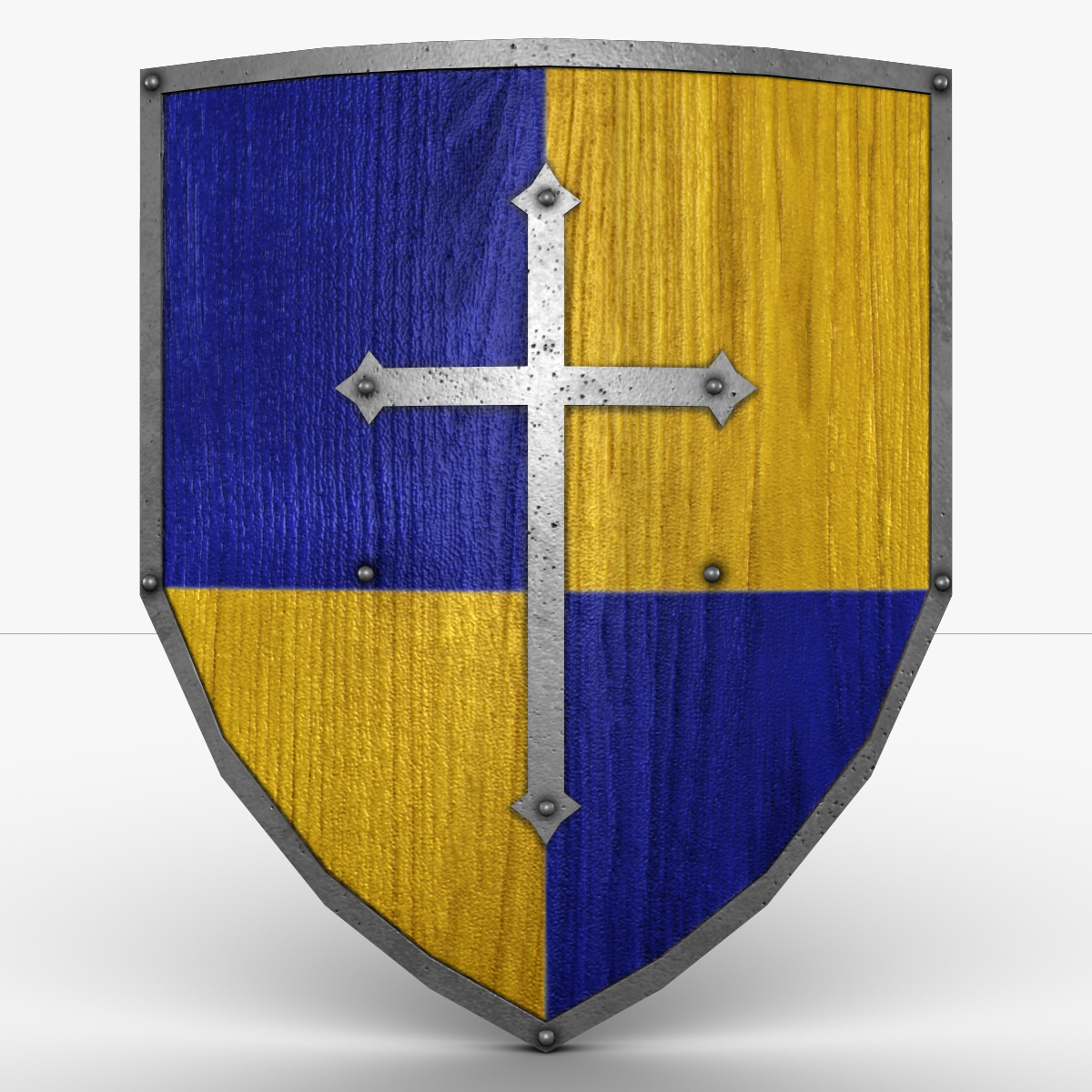
It also allowed the horse's reins to be gripped with the liberated left hand.

Unlike a boss, or centralised grip, this allows a greater degree of weight distribution along the arm, rather than the weight pulling on the wrist. The kite shield predominantly features enarmes, leather straps used to grip the shield tight to the arm. Modifications to the kite shield occurred gradually, the top first being truncated, then the tail shortened and the resultant smaller shield that developed is referred to as a heater shield. The shield was still in widespread use throughout the 12th century, and is illustrated in art such as on the small Carlton-in-Lindrick knight figurine, but began to be phased out at the end of that century, and had largely disappeared by the 14th century as limb armour became more efficient, and therefore less leg cover was required of shields. The kite shield was an evolution in the development of shields, representing a change in the popular circular shape which had been dominant in Europe since at least 500 AD. The shield is most closely associated with the Normans, who were one of the first cultures to use it widely, and can be seen throughout the Bayeux Tapestry. It was either flat in section, or featured a gradual curve, to better fit the contour of the human torso, much in the style of a scutum.
#Diy kite shield professional
(1828)īelieved to be an evolution of the simple round shield purely to guard one whole flank of a rider when in combat, the shield gained popularity amongst professional soldiers as it allowed them to guard their foreleg when in a mêlée. The term is a neologism, created by Victorian antiquarians due to the shape's resemblance to an early European kite. The tapering point extended down to either a distinct or rounded point. It was either a reverse teardrop shape or later on, flat-topped. Kite shields used by both sides in a scene from the Bayeux TapestryĪ kite shield was a distinct type of shield from the 10th–12th centuries.


Norman-style kite shield shown in the enamel tomb effigy of Geoffrey V, Count of Anjou(d.1151) at Le Mans
#Diy kite shield how to
Please improve this article by adding a reference.įor information about how to add references, see Template:Citation. This article does not contain any citations or references.


 0 kommentar(er)
0 kommentar(er)
